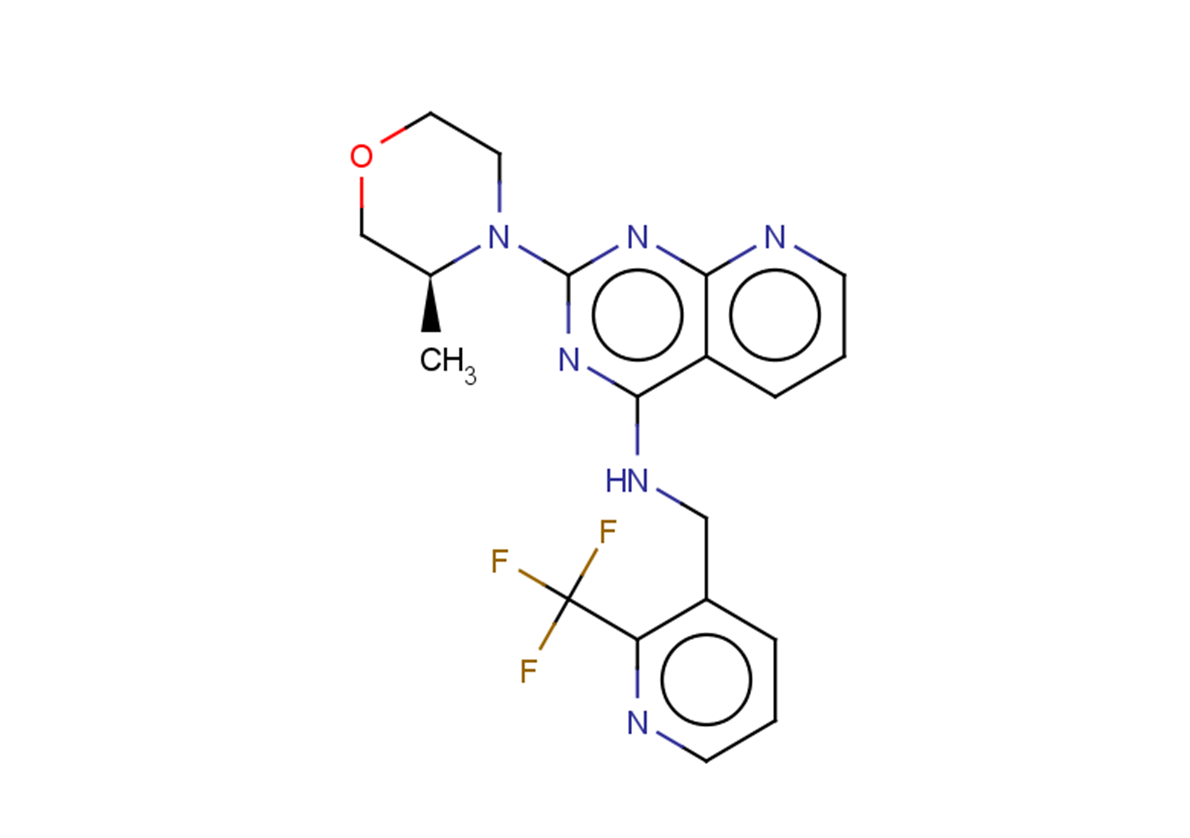
AWZ1066S
CAS No. 2239272-16-1
AWZ1066S( —— )
Catalog No. M24017 CAS No. 2239272-16-1
AWZ1066S is a highly specific anti-Wolbachia drug candidate for the short-course treatment of filariasis (EC50: 2.5 nM in cell assay).
Purity : >98% (HPLC)
 COA
COA
 Datasheet
Datasheet
 HNMR
HNMR
 HPLC
HPLC
 MSDS
MSDS
 Handing Instructions
Handing Instructions
| Size | Price / USD | Stock | Quantity |
| 5MG | 151 | In Stock |


|
| 10MG | 260 | In Stock |


|
| 25MG | 435 | In Stock |


|
| 50MG | 621 | In Stock |


|
| 100MG | 893 | In Stock |


|
| 200MG | Get Quote | In Stock |


|
| 500MG | Get Quote | In Stock |


|
| 1G | Get Quote | In Stock |


|
Biological Information
-
Product NameAWZ1066S
-
NoteResearch use only, not for human use.
-
Brief DescriptionAWZ1066S is a highly specific anti-Wolbachia drug candidate for the short-course treatment of filariasis (EC50: 2.5 nM in cell assay).
-
DescriptionAWZ1066S is a highly specific anti-Wolbachia drug candidate for the short-course treatment of filariasis (EC50: 2.5 nM in cell assay).
-
In VitroAWZ1066S has anti-Wolbachia activity with EC50 value of 121 nM.AWZ1066S has a weak CYP2C9 inhibitory activity with an IC50 value of 9.7 μM and has a weak CYP3A4 induced activity with an IC50 value of 37 uM, but does not show any time-dependent inhibition across five majorhuman CYP450 isoforms (CYP1A, CYP2C9, CYP2C19, CYP2D6, CYP3A).
-
In VivoAWZ1066S (oral; 50, 100 mg/kg; bid; for 7 days) has high anti-Wolbachia efficacy.AWZ1066S (i.v or p.o; 5, 10, 85, 90 242 mg/kg) can oral delivery and has good aqueous solubility and metabolic stability.Mouse PK profiles of AWZ1066S and its mesylate salt in BALB/c mice (n=3).Animal Model:SCID mice Dosage:50, 100 mg/kg Administration:oral, bid, for 7 days Result:Showed good anti-Wolbachia effects.Animal Model:BALB/c SCID mice Dosage:5, 10, 85, 90 242 mg/kg Administration:i.v or p.o Result:Showed good aqueous solubility and metabolic stability.
-
Synonyms——
-
PathwayMicrobiology/Virology
-
TargetParasite
-
RecptorParasite
-
Research Area——
-
Indication——
Chemical Information
-
CAS Number2239272-16-1
-
Formula Weight404.39
-
Molecular FormulaC19H19F3N6O
-
Purity>98% (HPLC)
-
SolubilityDMSO:120 mg/mL (296.74 mM; Need ultrasonic)
-
SMILESC[C@@H](COCC1)N1c1nc2ncccc2c(NCc2cccnc2C(F)(F)F)n1
-
Chemical Name——
Shipping & Storage Information
-
Storage(-20℃)
-
ShippingWith Ice Pack
-
Stability≥ 2 years
Reference
1.Hong WD, et al. AWZ1066S, a highly specific anti-Wolbachia drug candidate for a short-course treatment of filariasis. Proc Natl Acad Sci U S A. 2019 Jan 22;116(4):1414-1419.
molnova catalog



related products
-
Conoidin A
Conoidin A is a cell permeable inhibitor of T. gondii enzyme peroxiredoxin II (TgPrxII) with nematicidal properties.
-
Naphthoquine phospha...
An antimalarial drug.
-
UCB7362 hydrochlorid...
UCB7362 hydrochloride (UCB7362 HCl) is an orally active plasmepsin X (PMX) inhibitor (IC50: 7 nM) with antimalarial activity that inhibits parasite growth.



 Cart
Cart
 sales@molnova.com
sales@molnova.com


